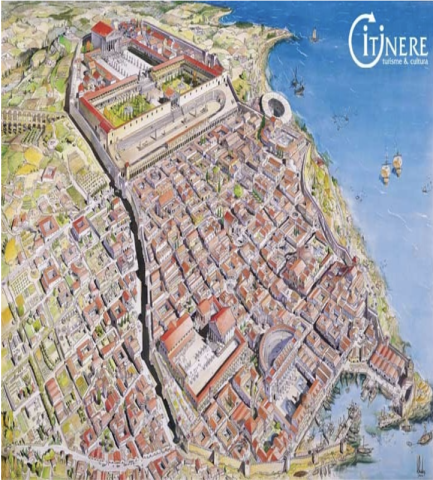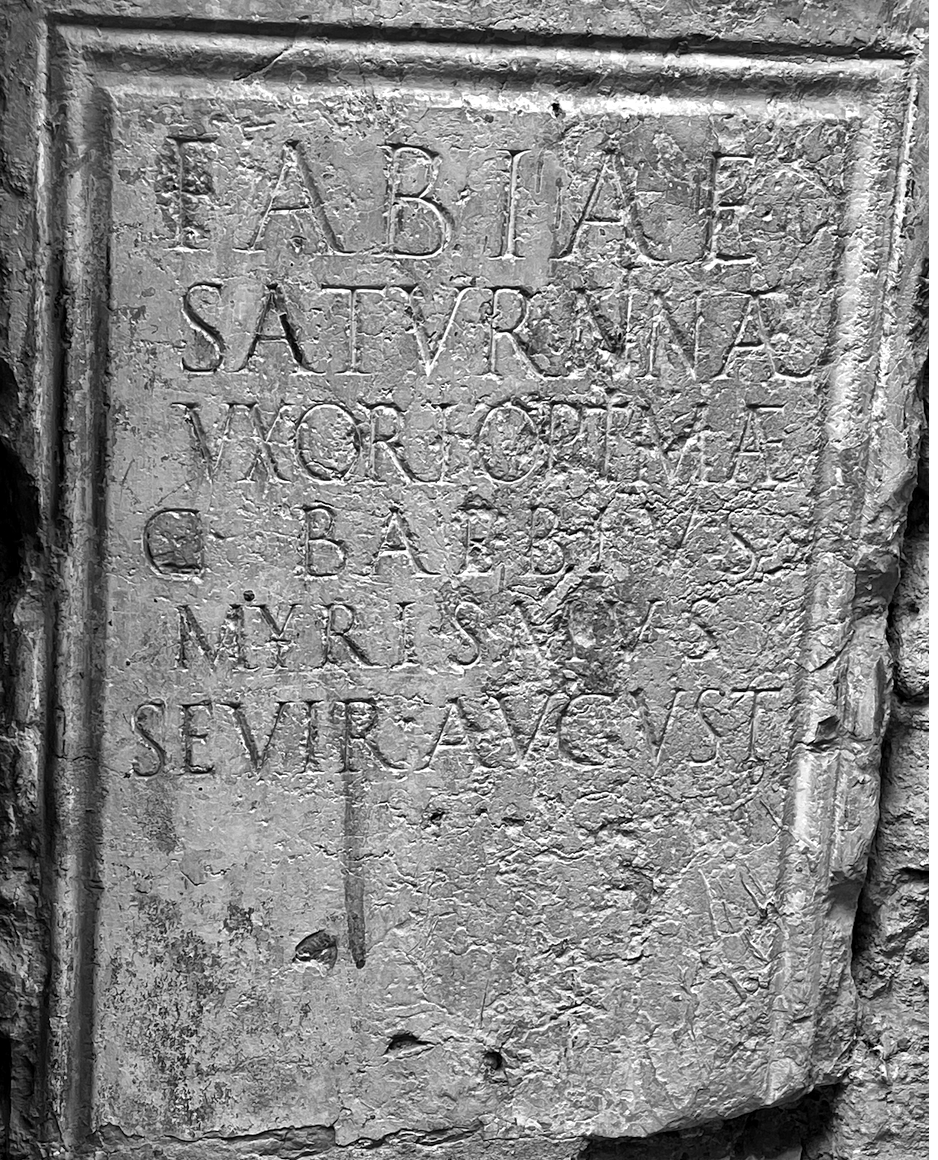
What do we want to know about the people in the past? We want to know what we want to know about everyone: how did you fall in love? What was the story of your love?
Sometimes the people from the past leave us clues.
I was born in the U.S., but I grew up in Spain, in the province of Tarragona. The capital city of the province is also called Tarragona, but with just a little scratching you can find clues to a layer of the past, when Tarragona was Tarraco, the first and oldest Roman settlement in what we now call Spain. Tarraco was the Roman center for governmental administration and trade on the Iberian Peninsula. It played this role from about 217 BCE until Tarraco was taken over by the Visigoths in 476 AD.
That’s nearly seven centuries of Roman rule. As a child, walking from the bus stop to school, I could see vestiges of it everywhere I looked. Sometimes I played hooky from school so I could I walk along the Roman walls. Duck under Roman arches. Imagine the gladiator fights in the almost intact amphitheater.
I didn’t know about the hippodrome then. But last Christmas I returned to Tarragona after a more than twenty year absence. My husband and I took a tour led by Georgia Costa of Itinere Tours.
It just so happens that Georgia and I went to the same school in Tarragona, just a couple decades apart. She showed us the clues to Tarragona’s Roman past that are harder to find: the remains of what was once an immense hippodrome (an oval-shaped track for chariot races), along with a forum (the Roman’s version of a mall) and a temple area where the Emperor was worshiped, that took up nearly a third of the city’s surface. She showed us the map you see above.
Toward the end of a really fantastic two-hour walking tour, she stopped in front of a store. This street was once was part of the Forum, but now it’s the heart of the medieval section of town, another layer added on top of the Roman one. The medieval inhabitants were particularly careful to build a cathedral over the site of the Roman temple. You can see videos that unpeel the layers and a virtual recreation of what the temple area must have looked like on the Imageen website.
Today the centro antiguo is distinctly medieval in character. But the old Roman center makes itself felt, makes itself known. Little clues. Little details. Little mysteries.
Like this one. They took the old Roman stones and built medieval houses with them. Sometimes the stones had writing on them, but the medievals didn’t care, they just wanted to re-use the stone.

The text is hard to read. Here is a transcription:
FABIAE
SATVRNNA
VXORIOPTMVS
C BARBIUS
MAYRISAMVS
SEVIR AVGVST
Here is what Georgia told us about it (transcriptions of video):
Ok and everyone likes them right, love stories? In fact the as such is very simple. Here it says Fabia Saturnina. For those of us who studied Latin at school, this is a proper name, and it is in dative case. You would translate it as “for” or “to” Fabia Saturnina. And who was Fabia Saturnina? She was the "uxori optima." So the translation would be "For Fabia Saturnina the best of wives." In the second part of the inscription is the name of the person who payed (for the inscription) who is the husband in this case, a gentleman called Gaius Barbius Mayrisamus, who was a Sevir Augustal, that is, one of the (city’s) administrators with some associated duties to the temple. OK, this is a pedestal of statue. The statue has been lost and the pedestal was left over here to decorate this house that’s one of the reasons why it has survived. Look there you see therein the background you see a wall that's the same one that we've seen at the beginning in front of the tour. It's the continuation of actually now we would be following the angle of the the large square and down here we would still be the lower parts of these Roman galleries. In fact the stores of this street still have access to a series of Roman tunnels. I'm not making this up! And down here we still have Roman structures still remain and every every time there was an invasion or an attack the owners of the store could hide in the tunnels.
My vacation ended and I returned to the United States. I couldn’t stop thinking about this inscription. Who was this man who loved his wife so much that he had a statue made in her honor and had this message inscribed on the pedestal? Who was the woman that he loved? I wanted to know the full story. I started looking for clues.
I had no idea of the full story I was about to discover.
